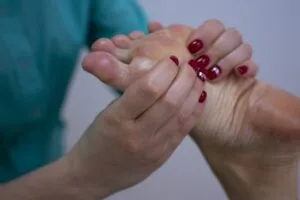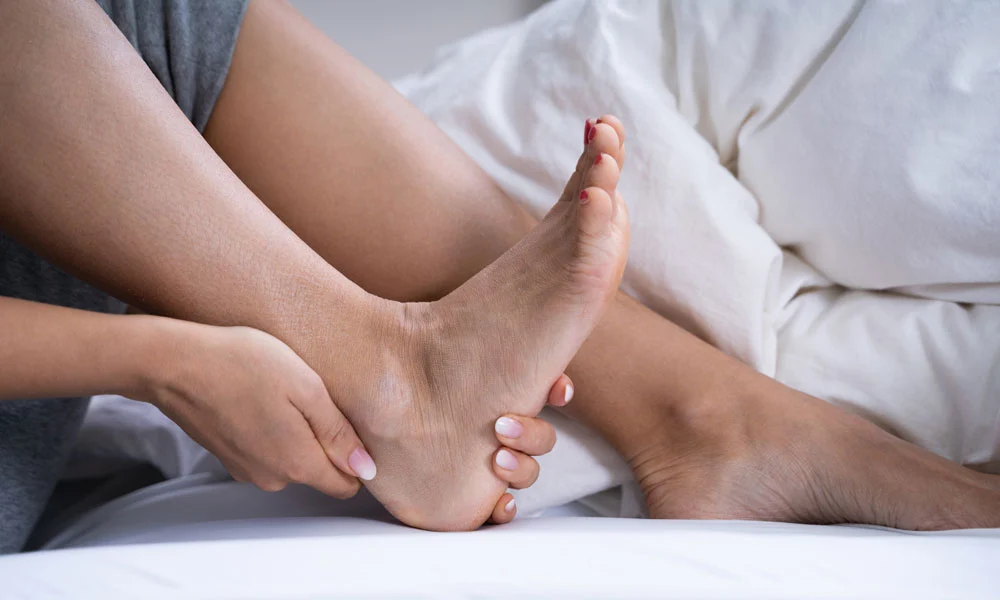Foot and ankle are consisting of 26 bones, 33 joints, and more than 100 tendons. The heel bone (Calcaneum) is the largest bone in your foot. Although heel pain sometimes is caused by degenerative conditions.
Causes of Heel Pain
The most common causes of heel pain include:
Achilles tendinitis
Achilles tendon rupture
Bone tumor
Bursitis (joint inflammation)
Haglund’s deformity (Retrocalcaneal bursitis)
Heel spur
Osteomyelitis (a bone infection)
Paget’s disease of bone
Peripheral neuropathy
Plantar fasciitis
Reactive arthritis
Rheumatoid arthritis (inflammatory joint disease)
Sarcoidosis (collections of inflammatory cells in the body)
Stress fractures
Tarsal tunnel syndrome
Muscle tightness
Overuse or injury to your heel may lead to heel pain. If it’s severe and disabling you should seek immediate medical care or try some home remedies for the same. Seek medical attention if you experience any of the below symptoms:
Severe pain
Sudden pain
Redness in your heel
Swelling
Difficulty in walking
Treatments Options for Heel Pain
Medical & surgical management
Treatments for heel pain include exercise, custom-made orthotics, anti-inflammatory medications, and cortisone injections. If conservative treatments fail, then surgery may be necessary. In rare cases, your doctor may suggest surgery to correct the problem, but heel surgery often requires a long recovery time and may not always relieve your foot pain. Most doctors will prescribe physical therapy as it is a non-surgical, side-effect-free option prior to surgery and steroids. Doctors may start treatment with non-steroidal anti-inflammatory drugs to reduce the inflammation and thus will get relief from pain. Steroids will help reduce the inflammation for about a month.
Think about surgical or non-surgical management if you are having bad heel pain even after 6 to 12 months of home care. Surgery is not a primary option for all heel pain. Surgical options are plantar fasciotomy and heel spur resection. Try non-surgical treatment options primarily if it’s not giving relief try surgical management.
Podiatry is a branch of medicine that is the study, diagnosis, and medical and surgical treatment of disorders of the foot, ankle, and lower extremity. A podiatrist is a specialist which deals with the treatment of disorders of foot and ankle.

Ayurvedic management
Ayurvedic treatment mainly focuses to eliminate the accumulated toxic substances that cause pain. Massage therapies with herbs, powders, and medicated oils are recommended in ayurvedic treatment. Some of the herbs are contraindicated for children, pregnant women, and elderly individuals. Treatment is administered with herbal massages, Ayurvedic medication, yoga, and other strict diet plans.
Homeopathic management
Homeopathic treatment is focusing to reduce inflammation by avoiding strenuous physical activities. Once the inflammation goes down the pain will reduce. Then they will start with their medications.
Yoga
Yoga poses help to strengthen and stretch the foot and leg and thus will relieve the heel pain. Poses that increase your heel pain should be avoided.

Physiotherapy management
In physiotherapy management, patients need to understand the condition and importance of pain management, foot care, stretching, and strengthening programs. Absolute rest, limiting the aggravating movements, and icing are essential to reduce the pain. IFT, US, and Shockwave therapy are the pain management modalities usually used in physical therapy. Once the pain subsides, an exercise program can be started to stretch the tight muscles and strengthen the weak muscles. Mobilizations and manipulations in manual therapy can improve the joint range of motion. Changing the footwear with a soft cushion type can protect the foot from the further chance of getting heel pain.
Extracorporeal Shockwave Therapy (ESWT) is an advanced modality for the treatment of musculoskeletal conditions and its very effective in tendinopathies and calcifications. ESWT uses sound waves (high amplitude pulses of mechanical energy) to break up infected tissues and stimulate the rapid healing process. The energy triggers the regeneration and reparative processes of the bones, tendons, and other soft tissues. ESWT is used to treat chronic, sub-acute, and acute conditions. After the shockwave session, Cryotherapy is advised to avoid muscle soreness.
If you are experiencing heel pain, please feel free to reach out to us for a consultation and assessment.

